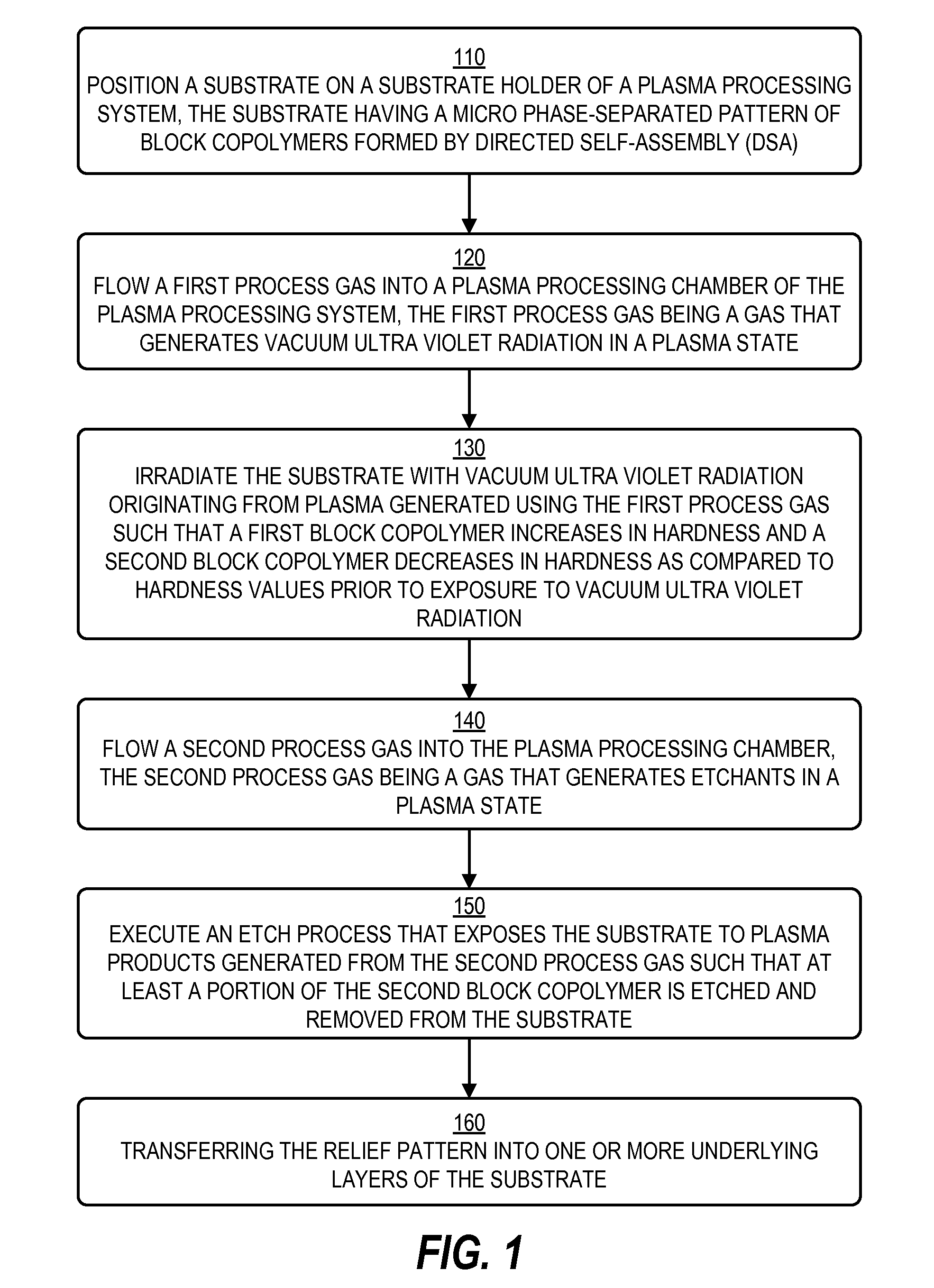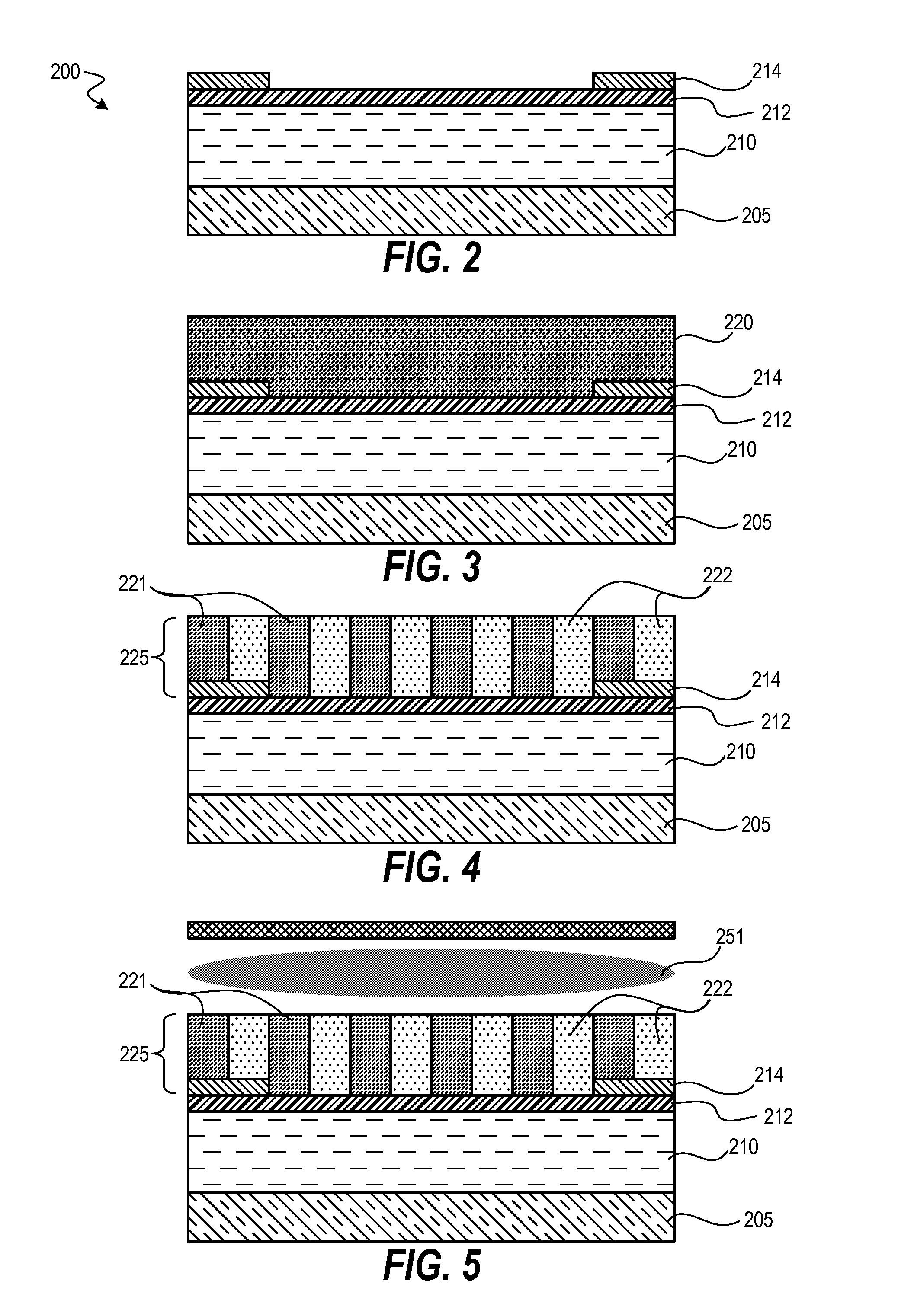Method for Directed Self-Assembly and Pattern Curing
a self-assembling and pattern technology, applied in semiconductor/solid-state device manufacturing, basic electric elements, electric apparatus, etc., can solve problems such as difficulty in generating usable patterns, affecting the quality of photoresists, so as to improve the quality of etching. , the effect of improving the pattern
- Summary
- Abstract
- Description
- Claims
- Application Information
AI Technical Summary
Benefits of technology
Problems solved by technology
Method used
Image
Examples
Embodiment Construction
[0020]Techniques disclosed herein include methods for DSA patterning and curing of DSA patterns. Techniques include curing phase-separated block copolymers using vacuum ultraviolet (VUV) light exposure at wavelengths from about 100 nanometers to 170 nanometers. VUV light can be generated using a plasma process system and from energizing various VUV-generating process gasses. A VUV curing step is executed (fully or partially) prior to executing an etch process to etch away one of the block copolymers. Such VUV exposure can selectively harden one block copolymer while weakening another block copolymer, even when both copolymers are organic polymers. This hardening and weakening increases etch selectivity enabling more effective etching and results in better patterns. Such resulting patterns can be stronger as well as have better line edge roughness (LER) as compared to DSA patterns without benefiting from the curing techniques disclosed herein.
[0021]Referring now to FIG. 1, a flow cha...
PUM
 Login to View More
Login to View More Abstract
Description
Claims
Application Information
 Login to View More
Login to View More - R&D
- Intellectual Property
- Life Sciences
- Materials
- Tech Scout
- Unparalleled Data Quality
- Higher Quality Content
- 60% Fewer Hallucinations
Browse by: Latest US Patents, China's latest patents, Technical Efficacy Thesaurus, Application Domain, Technology Topic, Popular Technical Reports.
© 2025 PatSnap. All rights reserved.Legal|Privacy policy|Modern Slavery Act Transparency Statement|Sitemap|About US| Contact US: help@patsnap.com



